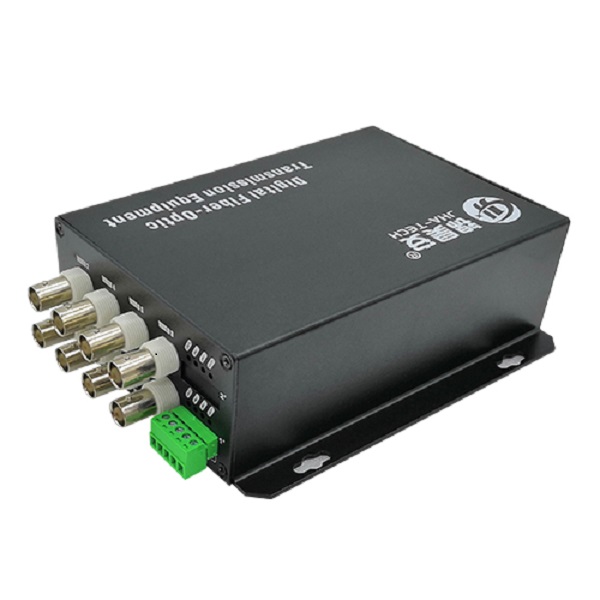Traditional fiber video converters are used for point-to-point applications. The fiber video converter is installed at both ends of the optical fiber, such as the most commonly used optical fiber Ethernet transceiver, which uses optical fiber to connect the computer network at both ends. And in occasions such as electricity, water conservancy, etc. Obviously, the networking mode is greatly restricted. At this time, optical cables and equipment are required to form a ring network. Optical equipment requires ring network optical terminal:central is convergence, corresponding communication signal (phone/video/Ethernet/serial port, etc.), it saves the investment of the optical cable to a large extent and improves the utilization rate of the fiber core, which is reasonable and necessary in practical applications.
What is Ring Type Fiber Video Converter?
Ring Type Fiber Video Converter need equipment with at least two or more optical ports, and these ports should be able to realize self-healing protection. When any node on the link fails, it can automatically select other routes to communicate with the center to ensure the normal communication of fault-free nodes.
Compared with traditional analog technology, digital technology has obvious advantages in many aspects. Just as digital technology replaces analog technology in many fields, the digitization of ring network optical transceivers is also an inevitable trend. There are two main technical methods for digital video ring network optical transceiver: one is MPEGII image compression digital ring network fiber video converter, and the other is all-digital uncompressed ring network fiber video converter.
Compared with the traditional analog ring network fiber video converter, the digital ring network video converter has obvious advantages:
1) Long transmission distance: up to 80Km or even longer (120Km);
2) Support video lossless regeneration relay, so multi-level transmission mode can be used;
3) Low environmental interference and high transmission quality;
4) The supported signal capacity can reach 16 channels or more (32 channels, 64 channels, 128 channels).
Post time: Jul-31-2020







